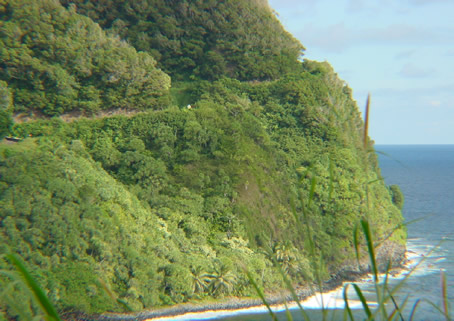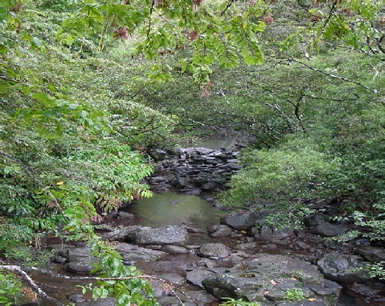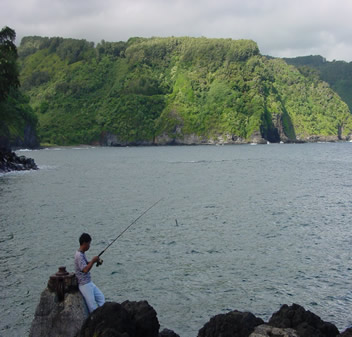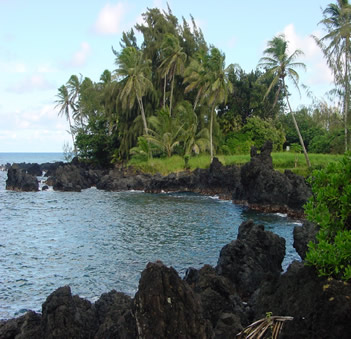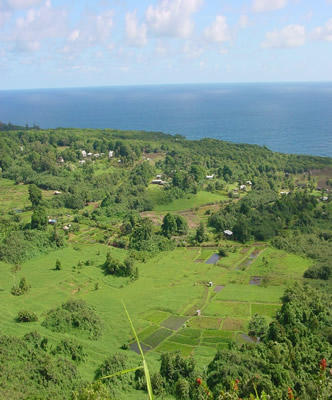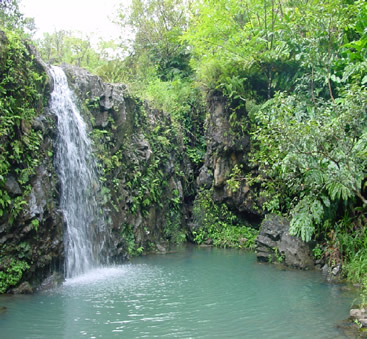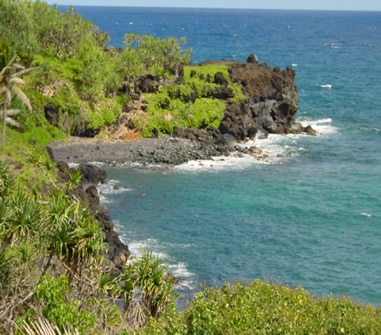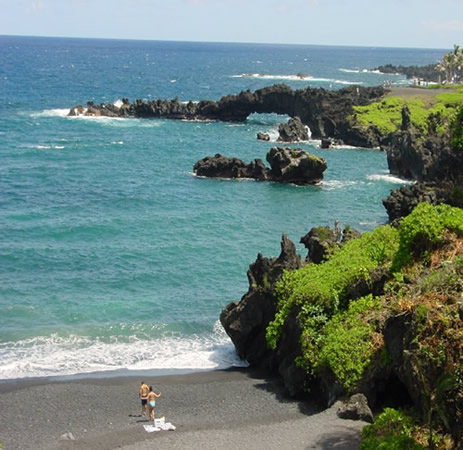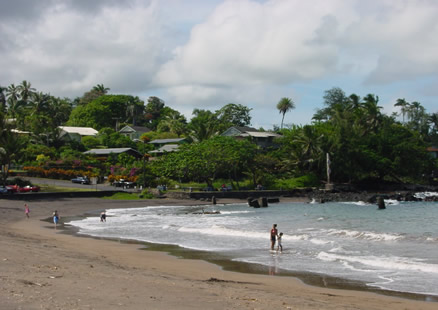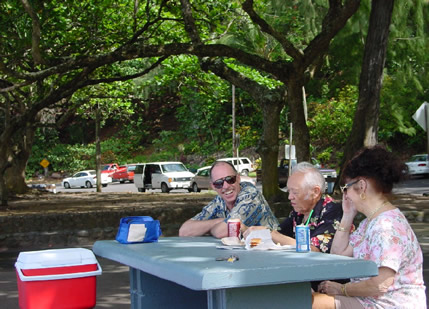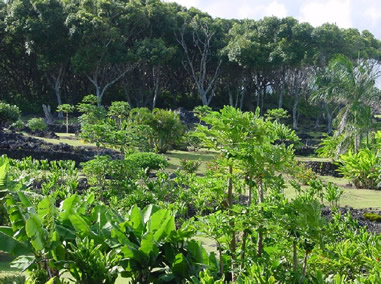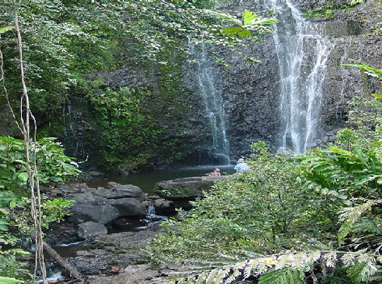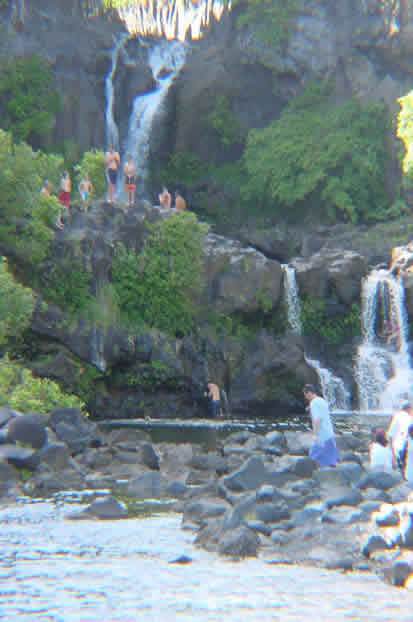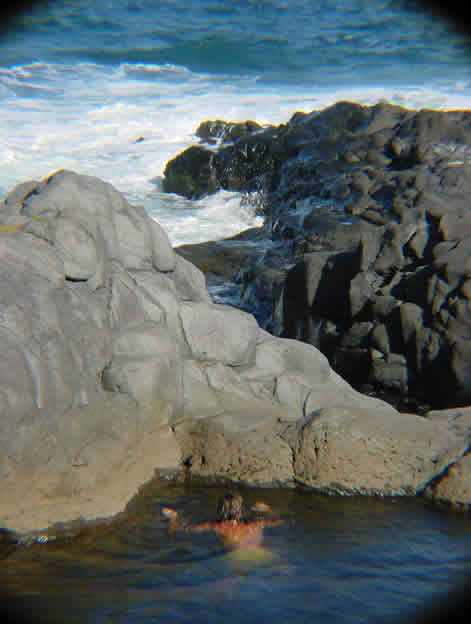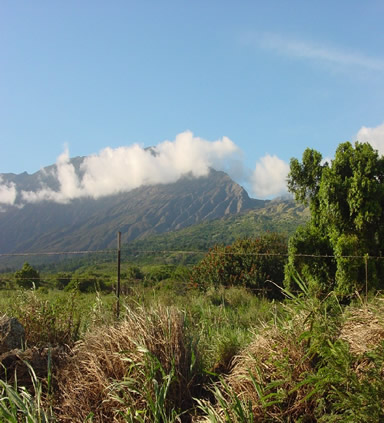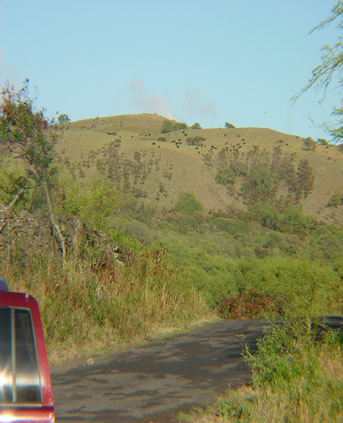THE ROAD TO HANA
Story & Photos by Vicki Andersen
It would be hours before the sun arose, and I was busy checking my list: pastries hot from the oven yesterday afternoon in Lahaina - check; fresh fruit from the Honokowai Farmer’s Market - check; chilled fruit juices - check; fat thermoses of hot chocolate and fresh-brewed Kona coffee - check. We had a long day ahead of us, and I’d researched what I thought would be the perfect spot to enjoy a picnic breakfast, overlooking Honomanu Gulch and Maui’s rugged eastern coastline.
Not only were we taking the Road to Hana, but we were driving the full loop -- past Hana, across the southern tip of the island, and around the west side of Haleakala. Arguably the most famous scenic drive in Hawaii, it also had a rep for being a white-knuckle adventure, especially past Hana where all the guidebooks advised venturing only by 4-wheel drive. In preparation, we’d swapped our rental sedan for an SUV and were ready to hit the road.
For nearly three decades my folks had made an annual ritual of spending a few weeks in Hawaii. For the last twenty, Dad had wanted to make this drive. Hubby and I had covered just about every mile of pavement on Maui except this road. As the years crept up on us all, and other drivers seemed to become less attentive and courteous, we decided to overlap a trip with my folks and make this a family outing. I wanted it to be special, over and above the awesome drive awaiting us... thus our breakfast date accompanied by a feast of island delectables.
In about an hour we’d crossed the Island and were approaching Pa’ia, the last outpost for gas. It was still quiet in this charming little former plantation town. Perhaps some of the monks at the Mantokuji Buddhist Mission were stirring, but it would be a while yet before they rang their gong to announce the sunrise.
We were now skirting along the ocean and even though it was quite early and the winds were calm, I hoped to see a hardcore sailboarder challenging the waves at Ho’okipa Beach. This spot, world-famous for its wave and wind action, is considered the windsurfing beach on Maui and draws riders from around the world to its international championships. We had managed to be ahead of the traffic, but that also seemed to include the locals going about their business and play.
At mile marker 16, Highway 36 that we’d been traveling from Kahului intersects with the Kaupakulua Road, a.k.a. Highway 365, and the mile markers return to zero. This is considered the official start of the Hana Highway which follows the windward shore, climbing in and out of valleys and presenting one piece of eye candy after another.
